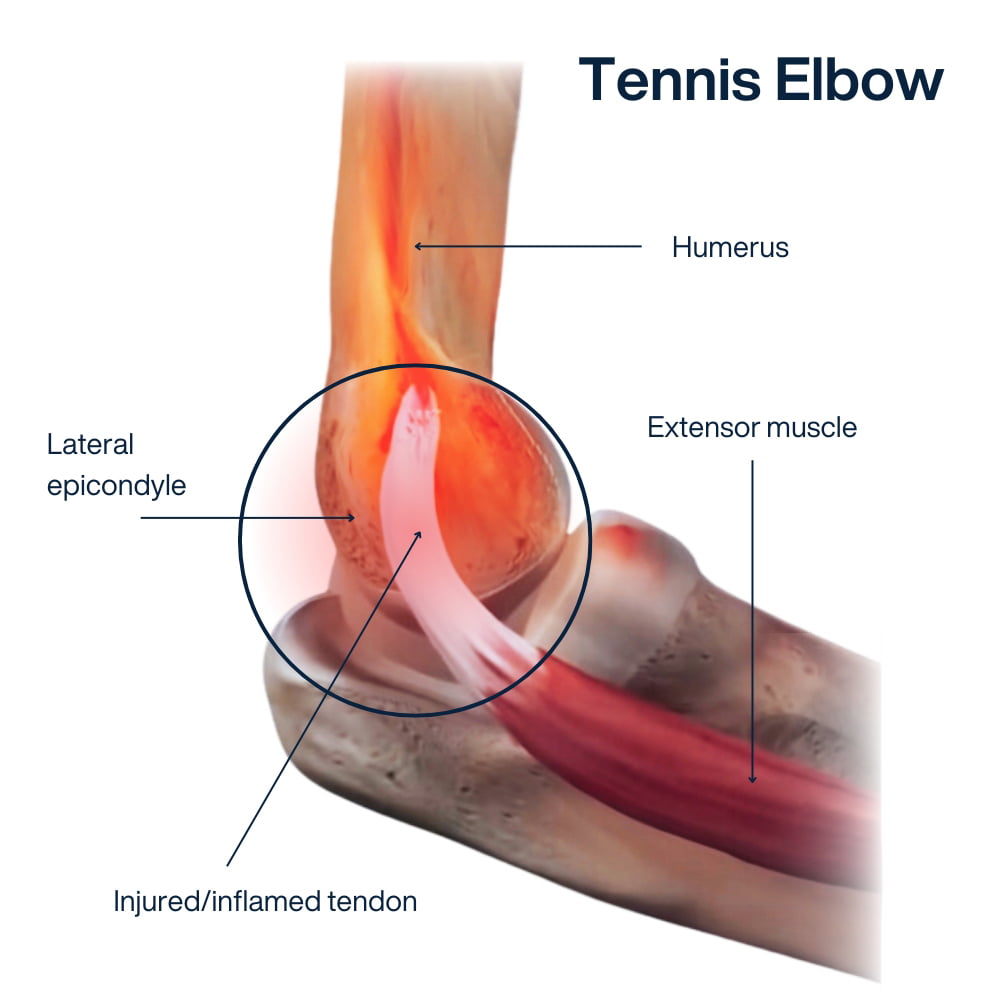If your elbow pain is affecting your lifting routine and you need assistance in managing or treating your elbow pain, do not delay seeking medical attention. At Pain Management NYC, Dr. Leon Reyfman takes your pain seriously and ensures you receive the best possible care that suits your specific needs and helps you get back to your exercise in the shortest possible time. He focuses on diagnosing the reasons behind your pain and offers a wide range of treatment options to ensure your elbow regains its strength and stability so you can weightlift without experiencing any pain or discomfort.
Elbow pain in weight lifters is a surprisingly common and incredibly frustrating phenomenon. Pain in the elbow can occur for various reasons, including lifting objects, whether they are light or heavy. Overuse injuries occur from repetitive movements, such as lifting heavy objects again and again.
Pain in the elbow can also occur because of an acute injury. Lifting a heavy object, especially one that is unusually heavy, can result in an acute injury. Sometimes, the cause can be something that went unnoticed at the time. The earlier you address the pain, the better, as it can worsen and become harder to treat. Whether you are training for personal goals or to take part in Olympic lifting, learning about what causes elbow pain and how you can prevent it ensures you can continue training without any disruptions.
Why Do Weightlifters Get Elbow Pain?
 Elbow pain in weightlifters is most often a result of overuse or tendonitis. It usually results from pushing your tendons beyond what they can handle. This pressure or strain can come from increased training volume, reduced rest or lack of recovery period, or simply changing your grip.
Elbow pain in weightlifters is most often a result of overuse or tendonitis. It usually results from pushing your tendons beyond what they can handle. This pressure or strain can come from increased training volume, reduced rest or lack of recovery period, or simply changing your grip.Elbow pain can be caused by physical activities such as weight training. The common types of elbow injuries are:
- Weightlifter’s elbow
- Tennis elbow
- Golfer’s elbow
Read on to find out what type of elbow pain weightlifters can have, its causes, how serious this pain can be, and when you need to see a doctor.
Related Articles: Pain in Elbow When Straightening Arm?
What Is a Weightlifter’s Elbow?
Weightlifter’s elbow, also known as triceps tendonitis is an overuse injury caused by repetitive motion that irritates the tendon that connects the triceps muscle to the elbow joint. Doing a lot of push-ups, dips, bench presses, or any motion that puts a lot of force through the triceps can lead to stress and inflammation of the triceps tendon, which results in pain.
Symptoms of a weightlifter’s elbow include:
- Pain or burning at the back of the elbow accompanied by stiffness and swelling
- A sharp pain when extending the elbow, especially against resistance
- Tenderness, swelling, and soreness after working out
- Reduced grip strength when exercising and lifting dumbbells or barbells
- Pain that worsens with repetitive movements such as weight training, e.g., overhead press, push-ups, bench press, skull crushers
- Increased pain when applying pressure to the affected area
Along with repetition, poor form, insufficient recovery time, and using too much weight can also contribute to the lifter’s elbow.
Tennis Elbow
This condition occurs when the tendons surrounding the bone of the elbow tear or swell. If you experience pain when performing everyday actions such as twisting, gripping, or lifting, it means you have tennis elbow.
Symptoms of tennis elbow include:
- An aching sensation on the outside of the elbow
- A sharp pain that spreads down to your wrist, even at rest
- A weak grip
- Swelling of the tendons
Repeated motions cause swelling in the joint and tendons. Symptoms can worsen without treatment.
Golfer’s Elbow
Golfer’s elbow, also known as thrower’s elbow, is a type of tendon inflammation. It occurs when overuse or injury causes small tears in the tendon connecting the elbow and wrist. You may experience pain when you bend the wrist toward the forearm.
This condition can affect anyone who performs an activity that puts a continual strain on the wrist and forearm.
Symptoms associated with golfer’s elbow may be mild or severe. They include:
- Pain when flexing the wrist toward the forearm
- Pain that extends from the inside of the elbow through the wrist
- A weak grip or a weakened wrist
- Difficulty moving the elbow
- A tingling sensation that extends from the elbow to the ring and little fingers
- A stiff elbow
Any type of elbow pain can have a significant impact on weight-lifting activities. It not only leads to discomfort but also makes it difficult to perform certain exercises as you engage in gripping activities that put a strain on the elbow.
Related Articles: How to Treat Elbow Pain from Weightlifting
Causes and Risk Factors
Overuse or injury of the tendon is the most common cause of elbow pain in weightlifters.
Risk factors include:
- Increased training volume – Increases should always be planned out and gradual. Sticking to your plan can save you from injuries.
- Insufficient rest period – Rest periods are key for tissue recovery. The body’s soft tissue recovers during rest, which ultimately makes you stronger. Allow enough recovery time between training days for each muscle group to achieve your heaviest lifts.
- Rapid changes to routine – Whether you are new to weightlifting or changing your routine, go slow. Let your hands, forearms, and elbows, all become accustomed to the workout or routine before increasing frequency.
Is It Possible to Continue Lifting With Elbow Pain?
If you are experiencing pain when lifting, you should stop to prevent further damage and seek medical help. This pain can worsen if you continue lifting without paying attention to the type of pain you are having. The good news is that you don’t have to quit lifting completely if you do things right and work with your doctor to manage your pain and other symptoms.
Tendonitis usually presents itself as pain near the bony prominence of either side of your elbow. It is often tender to the touch, and the pain generally increases when you pinch or grip objects. It is essential to take your discomfort seriously and get proper treatment. Icing often helps as it can numb the affected area and keep the pain and inflammation down.
If you want to continue lifting with elbow pain, you will have to focus on reducing the stress on the tendons as they recover. With the right approach and reduced stress on the tendons, you can continue to lift while resting the aggravated part of the tendon. You must work with your doctor and therapist to find out more about ways to work out without causing further complications.
Eccentric strengthening also plays a crucial role when it comes to lifting with elbow pain. After about three weeks, tendinitis is no longer inflamed or troublesome. The tendon starts to change, and at this time, a different treatment regimen is needed. Eccentric strengthening involves performing regular or reverse wrist, depending on which side of your elbow is affected.
During this type of curl, you lower the weight slowly, over five seconds. Performing three sets of 20 reps once daily with enough weight to fatigue the tendon has been shown in studies to help resolve tendinitis over time.
How to Prevent Elbow Pain When Lifting?
While it is not always possible to avoid elbow injuries, understanding the causes and risk factors is key to preventing and managing the condition.
The following tips can help prevent elbow pain:
- Have your tendons trained for the upcoming load – Work on gradually improving your grip strength to train your elbow tendons to withstand a greater load and avoid injuries.
- Train your posterior shoulder muscles and mid-back – Training your posterior shoulder muscles and mid-back to balance your strength routine can take your workout to the next level without injury.
- Stretch – Loosening up your muscles before and after you work out is essential.
- Massage – Use a massage ball or a foam roller to release muscle or tissue stiffness. It allows the joint to move more freely.
- Focus on form – Proper form while exercising can help prevent injury and build muscle.
- Take a break – If you experience lingering elbow pain or stiffness, particularly when attempting to bend or extend, it is time to take a break and give your elbow a rest for a few days.
When Do You Need Help for Your Elbow Pain?
Elbow pain can be very frustrating for weightlifters. It is best to seek medical help if your pain has lasted for more than 2 weeks, you cannot lift without modifying your exercises, or it is becoming difficult to perform routine activities and work because of the elbow pain.
Some symptoms to look for include:
- Sudden, severe pain
- Swelling, warmth, and discoloration
- An inability to move the elbow or arm
- Numbness or weakness in the forearm, wrist, or hand
Call your doctor right away if you believe you may have fractured a bone in your elbow.
Treatment of Elbow Pain
Treatment for your elbow pain depends on the level of pain you have as well as the severity of the injury.
Mild cases can be best treated with:
- Rest
- Icing
- Compression sleeve
- Over-the-counter anti-inflammatory medication for a week or two
If your pain is severe or you do not notice any improvement after a week of resting, your doctor may recommend additional treatments.
Medical Treatment
Your pain doctor will examine your joint and take an xX-ray to ensure no other condition is causing your pain. If there are no fractures or a torn muscle or ligament, your doctor may recommend the following options:
- Joint injection or cortisone shot – The injection offers temporary relief, which helps you regain mobility and address the root cause in the meantime.
- Prescribed anti-inflammatory medications – They can relieve pain and keep the inflammation down.
- Strength therapy & physical therapy – They focus on treating tendinosis, but addressing underlying issues like inflammation and muscle restriction is important for long-term relief.
Making adjustments to your repetitive lifting and following the doctor’s treatment recommendations can keep the discomfort down. If all conservative measures are unsuccessful, surgery may be necessary to repair or remove the damaged tendon. After a short rehabilitation period, you can start physical therapy to strengthen and stretch the tendon and regain full use.
Do not let elbow pain keep you from weightlifting and achieving your health goals – Call Pain Management NYC today to schedule an appointment with our internationally recognized pain management specialists for the best advice on your condition. Dr. Leon Reyfman helps in managing and treating your elbow pain with the most advanced treatments and techniques that provide quick pain relief. He ensures you receive the highest quality care and learn how to train the right way to prevent further elbow strain or injury and continue with your health goals successfully.

Boleslav Kosharskyy, MD, is a top-rated, best-in-class interventional pain management doctor. He is board-certified in Anesthesiology, Interventional Pain Medicine, and Palliative Care.
Dr. Kosharskyy is an Associate Professor of Anesthesiology and Rehabilitation Medicine at Albert Einstein Medical College. He’s also the Associate Medical Director of Pain Medicine and Director of Anesthesia for the Joint Replacement Center at Montefiore Medical Center and Albert Einstein Medical College.
He is an active member of the American Society of Anesthesiology (ASA), the American Society of Regional Anesthesia and Pain Medicine (ASRA), and the New York State Society of Anesthesiologists (NYSSA)
